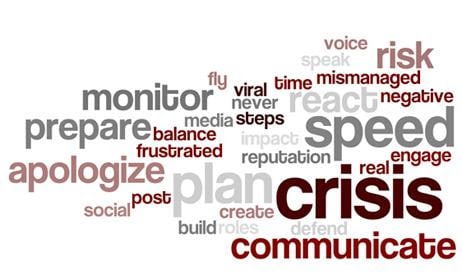
Recent Tragedies Remind Us of the Importance of a Crisis Communications Plan
The tragedy on Florida International University’s campus recently that resulted in six deaths and multiple injuries is a reminder to us the necessity of having a crisis communications plan. When tragedy occurs and the news spreads quickly, having a plan in place that can be easily implemented is key.

Kimberly Kayler
No matter your organizational structure or offerings, a crisis can occur that requires immediate and constant communication with your stakeholders and maybe even the general public. Begin the planning process by assembling a cross-section of your organization, to include someone from accounting, human resources, marketing, project management and more. This group should meet frequently so all members are familiar with the other members, their style and preferences should a crisis occur.
With the proper players assembled, your team should identify the possible scenarios you are likely to encounter. Brainstorm these “what ifs” and then assemble action plans for the scenarios, to include a detailed list of who to call for what and when, as well as key facts about your organization/key messages that can be easily integrated into a response. For example, safety record, key organizational history and facts, and other details that may be needed in a crisis should be outlined so they can easily be weaved into any media response. Establish a chain of command, recognizing that it may make sense to alter your “traditional” day-to-day hierarchy as successful execution of this plan requires different skills and objectives. This action plan should be reviewed periodically and updated, especially when your organization enters a new market, secures a high-profile project, or changes substantially in any fashion. In addition to requiring all members of the team to keep a copy of the most recent plan at their home, be sure to keep copies of the plan in numerous other off-site locations in case of disaster at your physical headquarters.
 Once the plan is assembled, it is important to announce the chain of command and procedures internally. Make sure your front-line employees are made aware of the policies and procedures, as well as appropriate contacts, regarding the media so they aren’t caught off-guard by a reporter at a job site or on the phone. In most cases, all employees should be instructed to turn over any media inquiries to a specific person. Media training is a must to ensure the proper delivery of messages and how to effectively work with reporters. As a final thought, crisis communication is just one element of a public relations program. The documented contact list, policies regarding data dissemination, as well as identification of key contacts and spokesperson(s) can also be used as a proactive tactic in sharing positive information about your organization.
Once the plan is assembled, it is important to announce the chain of command and procedures internally. Make sure your front-line employees are made aware of the policies and procedures, as well as appropriate contacts, regarding the media so they aren’t caught off-guard by a reporter at a job site or on the phone. In most cases, all employees should be instructed to turn over any media inquiries to a specific person. Media training is a must to ensure the proper delivery of messages and how to effectively work with reporters. As a final thought, crisis communication is just one element of a public relations program. The documented contact list, policies regarding data dissemination, as well as identification of key contacts and spokesperson(s) can also be used as a proactive tactic in sharing positive information about your organization.
Who should talk to the media?
Contrary to popular belief, the highest ranking official at your company is not necessarily the best person to be your corporate spokesperson. Regardless of whether or not he or she is a polished speaker, the appropriate person should not be the highest employee in the organization since that leaves nobody to clean up any blunders or media mishaps. For example, if your president says something out of turn or disseminates the wrong information, there is nobody to retract or set the record straight. Obviously, there are several exceptions to this rule and it is often appropriate for a president to comment on, for example, an employee death due to a job site accident. However, such remarks should be confined to condolences to the family while the cause and explanation should be delivered from someone lower in the company in case controversy surrounding the comments arise. The ideal person should have a high enough title and position in the company to command the respect necessary to serve as a credible source, however, his/her role would allow them to say they don’t know the answer to something.
Start your planning today
AOE has specific training and expertise related to crisis communications, having assisted many associations and privately-held companies with crises ranging from jobsite fatalities and chemical spills to product liability issues and layoffs. In fact, I am trained by the National Transportation Safety Board and have specific experience to help minimize the impact of a crisis on your organization. Establishing a relationship with our experienced PR team now is a wise step and will give you the peace of mind should a crisis occur. Media training should also be considered.
Contact me today for a free discussion about your needs.






